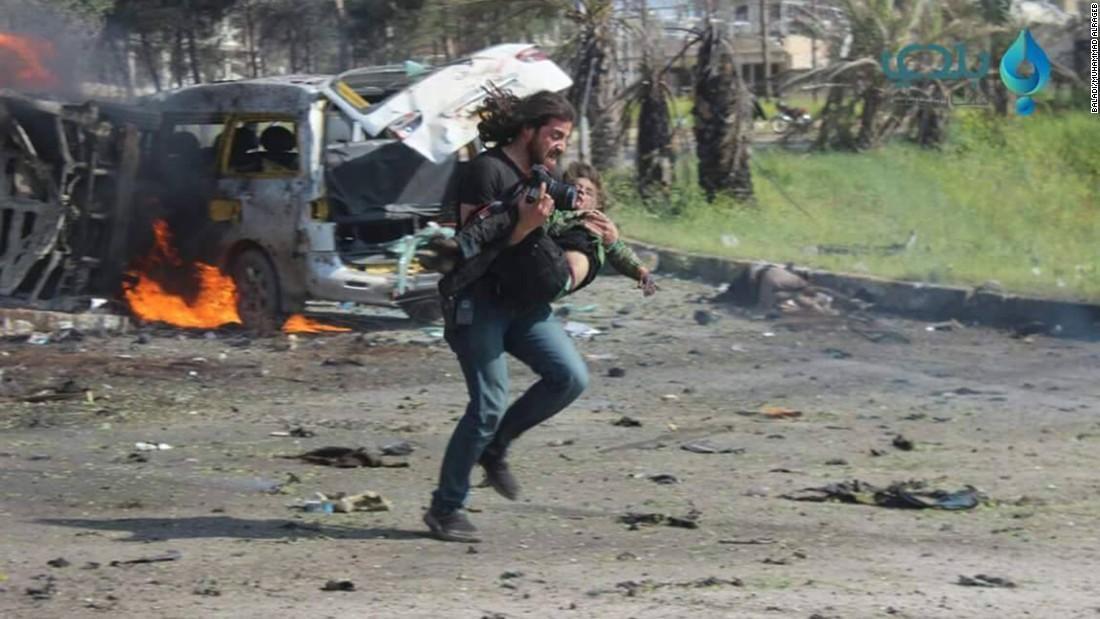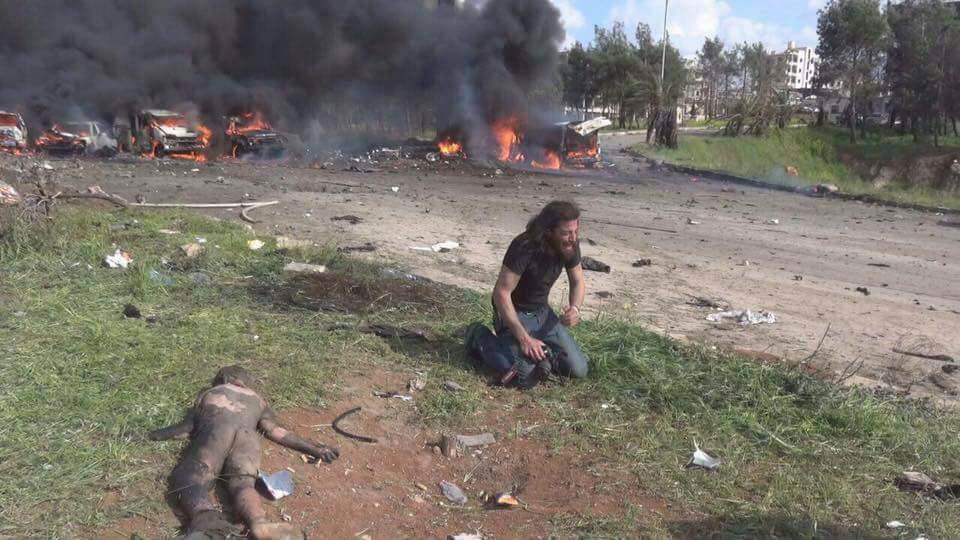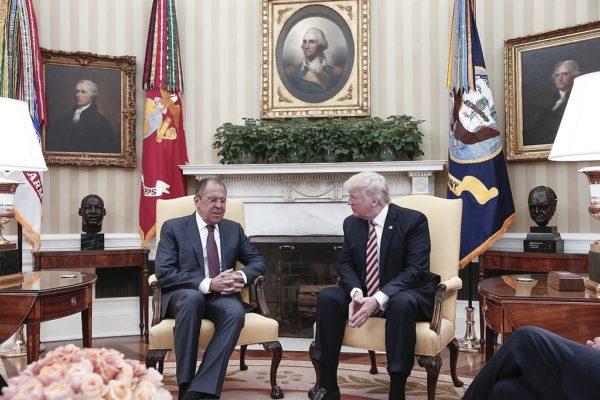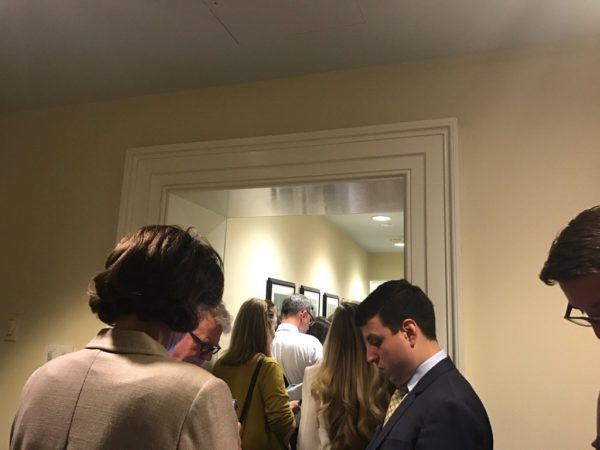Notes
Beyond Compassion: On Photos of Syrian Photographer Rescuing Child

A month ago, a bombed bus convoy killed 126 Syrian evacuees. Media footage included an unusual scene amid the visually familiar chaos that characterizes such violence. Released by the Aleppo Media Center, two images featuring a photographer went viral in the days following the bombing. In one photograph, Abd Alkader Habak runs from the explosion site, cradling a boy in one arm and gripping a camera in his free hand.

The second photograph depicts Habak on his knees, sobbing a few feet away from the body of a different boy, killed by the explosion.
These two photographs of Habak with unnamed Syrian boys were not as widely circulated as photos of drowned Aylan Kurdi or shell-shocked Omran Daqneesh; but they nevertheless suggest that our connection to conflict zones hinges on scenes of active aid or intervention as well as those of bare suffering and its aftermath.
The photos featuring Habak resemble the tragic images of Aylan Kurdi, yet the causes and context of death differ in each case. Indeed, public interest in Habak following the bombing can be explained in part by how these photos visualize agency in relation to scenes of death and destruction. Newspapers reprinted one of two images widely shared on social media in their front page reporting of Kurdi’s drowning. Most of these stories led with the now-famous photo of a gendarme carrying Kurdi’s body toward the camera instead of the more explicit image of Kurdi facedown at the water’s edge. Online stories that included the images of Habak similarly emphasized the photograph of him running with the boy cradled in his arms; such stories typically closed with the second image of Habak (if they included it at all).
In comparison to the gendarme following orders in the Kurdi image, Habak broke ranks. As a CNN headline noted: “Syrian Photographer Takes Action Instead of Pictures.” Captions used by BBC, The Telegraph, and Independent ascribed newsworthiness not only to Habak’s rescue but also to his restraint with the camera: “Syrian photographer Abd Alkader Habak put down his camera to rescue a child injured in a car bomb blast on the outskirts of Aleppo.” NBCNews.com was unique in privileging the rescue in its caption: “Abd Alkader Habak is photographed carrying a wounded Syrian boy.” Such captions, and the virality of footage from Habak’s rescue, articulate a hopelessness that chokes our intake of news about Syria. Visual evidence of the horror in Aleppo has not produced compassion fatigue, but doubt in human agency. We are not numb, but impotent: we view, but cannot intervene.
The photos of Habak counteract such doubt. Multiple photographs of the rescue exist, but the two images most widely published show the photographer mid-step, gripping the child and his camera. In the wider shot, Habak sprints away from burning wreckage with the injured boy’s face visible to viewers. The tighter shot conceals the boy’s face behind the camera, but Habak leans into the child’s body, his head lowered as if bracing them both for incoming fallout.
If action begets agency, then perhaps the second image of a distraught Habak collapsed on his knees should logically fuel impotence—except it doesn’t. In the context of news coverage, this shot consistently accompanied the first image and was captioned to indicate Habak’s action. Second, the composition of the photograph allows Habak’s expression of grief to reverberate without apparent excess or hyperbole. Positioned between the heat of the car’s flames and the dead child (which was sometimes pixelated or cropped out of the image), Habak exhibits no fear, only justified despair. His emotional release channels outrage at the death of 80 children. Together, these two images of Habak express an emotional demand for intervention.
Journalists are not bystanders to atrocity. They expose it with images that alter our understanding and investment in particular conflict zones. The photographs of Habak do not imply that photographers should “put down their camera,” but that we are desperate for models of those who counter expectations, defy roles, and act otherwise. A first principle in advocacy storytelling, as conceived by human rights organizations like Witness, is the need to leave open a space for action. The images of Habak draw our attention because we too seek ways to move beyond passive horror to meaningful action. The photos with Habak also force us to consider the risks local journalists face in conflict zones where international media are barred from entry. In their work, seeing is acting. Our obligation is to be on the lookout for images of aid and hope (as well as suffering) and leave room for the possibility to act otherwise.
— Anne Demo
Photo: Aleppo Media Centre. Caption: After briefly being knocked unconscious by the blast activist and journalist Abd Alkader Habak put aside his camera to help those wounded. Photo 2: Muhammad Alrageb. Caption: Abd Alkader Habak cries on the ground.


Reactions
Comments Powered by Disqus